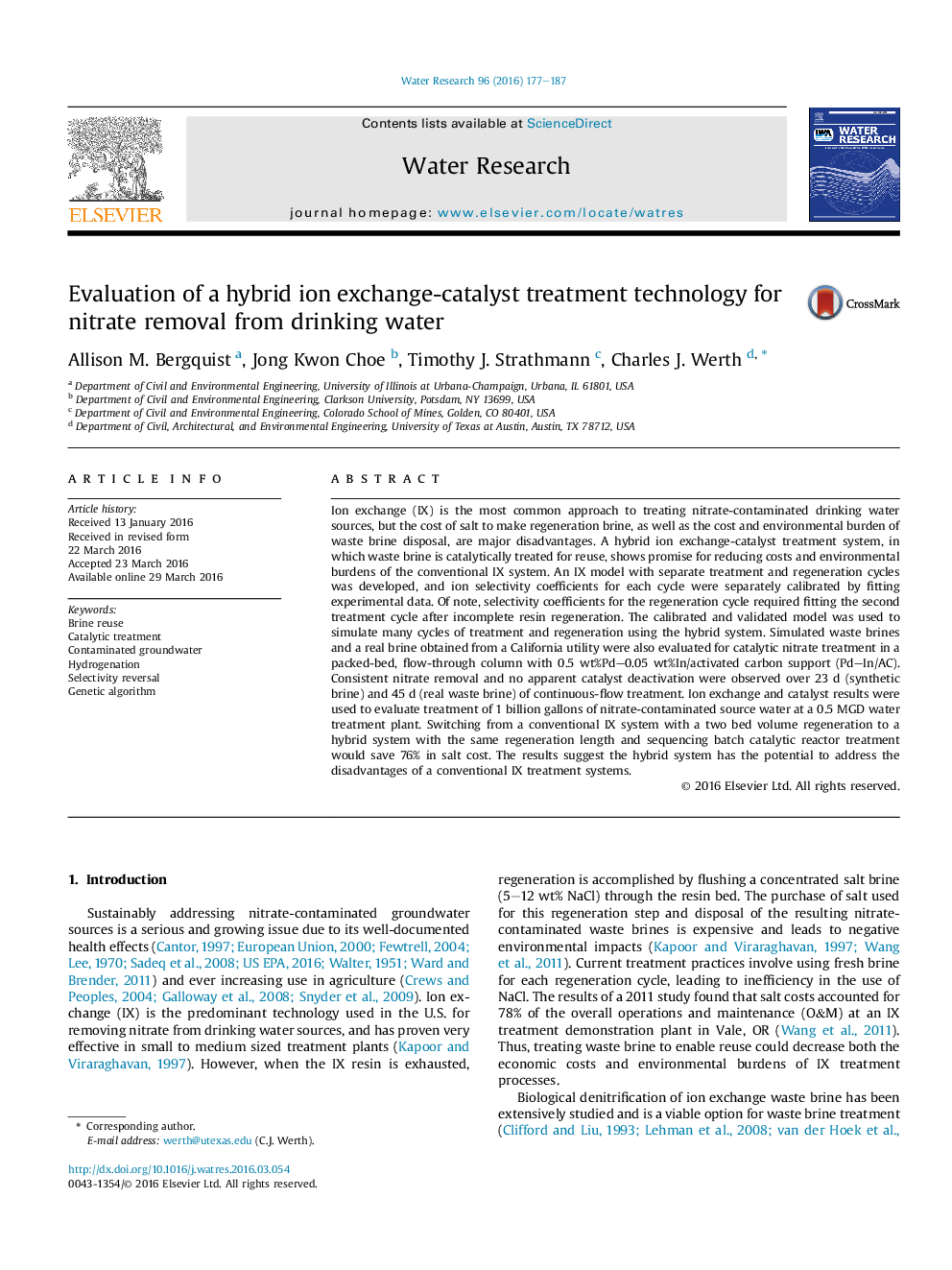| کد مقاله | کد نشریه | سال انتشار | مقاله انگلیسی | نسخه تمام متن |
|---|---|---|---|---|
| 4480915 | 1623072 | 2016 | 11 صفحه PDF | دانلود رایگان |
• Developed an integrated model for a hybrid ion exchange-catalytic treatment system.
• IX is accurately modeled with separate treatment & regeneration selectivity coefficients.
• Catalytic activity is maintained for weeks in a fixed bed reactor with real brine.
• A 1B gallon treatment scenario was modeled to quantify hybrid system benefits.
• Up to 76% salt cost savings is realized using 2BV regeneration in hybrid system.
Ion exchange (IX) is the most common approach to treating nitrate-contaminated drinking water sources, but the cost of salt to make regeneration brine, as well as the cost and environmental burden of waste brine disposal, are major disadvantages. A hybrid ion exchange-catalyst treatment system, in which waste brine is catalytically treated for reuse, shows promise for reducing costs and environmental burdens of the conventional IX system. An IX model with separate treatment and regeneration cycles was developed, and ion selectivity coefficients for each cycle were separately calibrated by fitting experimental data. Of note, selectivity coefficients for the regeneration cycle required fitting the second treatment cycle after incomplete resin regeneration. The calibrated and validated model was used to simulate many cycles of treatment and regeneration using the hybrid system. Simulated waste brines and a real brine obtained from a California utility were also evaluated for catalytic nitrate treatment in a packed-bed, flow-through column with 0.5 wt%Pd–0.05 wt%In/activated carbon support (PdIn/AC). Consistent nitrate removal and no apparent catalyst deactivation were observed over 23 d (synthetic brine) and 45 d (real waste brine) of continuous-flow treatment. Ion exchange and catalyst results were used to evaluate treatment of 1 billion gallons of nitrate-contaminated source water at a 0.5 MGD water treatment plant. Switching from a conventional IX system with a two bed volume regeneration to a hybrid system with the same regeneration length and sequencing batch catalytic reactor treatment would save 76% in salt cost. The results suggest the hybrid system has the potential to address the disadvantages of a conventional IX treatment systems.
Figure optionsDownload high-quality image (221 K)Download as PowerPoint slide
Journal: Water Research - Volume 96, 1 June 2016, Pages 177–187
